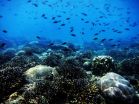(Press-News.org) Patients with insulin-dependent diabetes can better control their HbA1c value with a combination of blood glucose self-monitoring (BGSM) and continuous interstitial glucose monitoring (CGM) using a real-time measurement device (real-time CGM) than with BGSM alone without severe or serious hypoglycaemia occurring more frequently.
Data were lacking for most other outcomes and research questions, or the study results were not statistically significant, or they did not provide a clear picture. This was the result of a final report published on 21 May 2015, which the German Institute for Quality and Efficiency in Health Care (IQWiG) had produced, commissioned by the Federal Joint Committee (G-BA).
Better glycaemic control hoped for
Patients using intensive insulin therapy usually have to measure their blood-glucose levels four to six times daily to adjust their insulin dose. This method not always ensures optimal control of blood-glucose levels. Real-time CGM is hoped to improve glycaemic control. The devices not only show current glucose concentration, but also the trend of glucose levels so that patients can take action to avoid hypo- and hyperglycaemia. Better glycaemic control is also hoped to prevent or delay long-term complications from damage to small arterial vessels.
Some devices combine this real-time CGM with an insulin pump. One of the combination devices additionally has an automated low-glucose suspend (LGS) function: This pump suspends insulin delivery when the glucose level falls below a certain threshold to prevent hypoglycaemia.
Vast majority of studies on type 1 diabetes
IQWiG investigated 15 randomized controlled trials with a minimum duration of 24 weeks as to whether proof, indications or hints of greater benefit or harm of real-time CGM in comparison with other methods of measurement can be derived from them. The vast majority of the 1952 study participants in total had type 1 diabetes.
The following patient-relevant outcomes were included: all-cause mortality, cardiovascular mortality, cardiovascular morbidity, blindness, renal impairment, amputation, ketoacidotic or hyperosmolar coma, hypoglycaemia and HbA1c values (in joint consideration), symptoms of chronic hyperglycaemia, other adverse events, and health-related quality of life. In children and adolescents as well as in pregnant women, additional patient-relevant outcomes such as developmental disorders or miscarriages were investigated.
Improvement in HbA1c value without increase in severe or serious hypoglycaemia
The joint consideration of severe or serious hypoglycaemia and HbA1c values showed: The HbA1c value can be improved without increasing the occurrence of severe or serious hypoglycaemia in comparison with the control group. Depending on the age group (over/under the age of 18 years) and the severity of the hypoglycaemia, the certainty of conclusions was between a hint and proof.
There was a hint of harm of real-time CGM in the outcome "skin reactions" both in adults and in children and adolescents. In health-related quality of life, the few clinically relevant study results provided no consistent picture so that no hint of advantage or disadvantage can be derived from them. For all other outcomes, no conclusion on greater benefit or harm of the combination of real-time CGM and BGSM versus BGSM alone can be derived either because there were no statistically significant differences or because data were lacking.
Real-time CGM variants: no hints
In the comparison of different variants of real-time CGM, particularly of continuous versus intermittent real-time CGM, there was no hint of greater benefit or harm for any of the outcomes investigated - again partly due to the lack of statistically significant differences and partly due to the lack of data.
The same applies for the question whether real-time CGM in combination with BGSM and LGS function has greater benefit or harm than BGSM alone: The only relevant study on this comparison provided no statistically significant differences between the treatment options for any of the relevant outcomes.
INFORMATION:
Process of report production
IQWiG published the preliminary results in the form of the preliminary report in July 2014 and interested parties were invited to submit comments. At the end of the commenting procedure, the preliminary report was revised and sent as a final report to the commissioning agency in March 2015. The written comments submitted are published in a separate document at the same time as the final report. The report was produced in collaboration with external experts.
The executive summary provides an overview of the background, procedure and further results of the report.
Alternative splicing of obesity and type 2 diabetes related genes may contribute to the pathophysiology of obesity, according to research from the University of Eastern Finland. Obesity leads to changes in the splicing pattern of metabolically relevant genes such as TCF7L2 and INSR, resulting in impaired insulin action. However, weight loss, induced by either obesity surgery or a very low-calorie diet, reverses these changes. The findings, presented by Dorota Kaminska, MSc, in her doctoral dissertation, increase our understanding of splicing dysregulations in obesity and ...
A new study from North Carolina State University and Clemson University finds the toxin in a widely used genetically modified (GM) crop is having little impact on the crop pest corn earworm (Helicoverpa zea) - which is consistent with predictions made almost 20 years ago that were largely ignored. The study may be a signal to pay closer attention to warning signs about the development of resistance in agricultural pests to GM crops.
At issue is genetically engineered corn that produces a Bacillus thuringiensis (Bt) protein which, in turn produces a toxin called Cry1Ab. ...
This news release is available in German. A method known as navigated transcranial magnetic stimulation (nTMS) has been gaining importance in neurosurgery for some time now. Among other applications, it is used to map brain tumors before an operation and to test whether important regions of the brain, for example motor and language areas, are affected. Doctors at the Technische Universität München (TUM) have now shown that preoperative nTMS analysis of motor areas improves the prognosis of patients with malignant brain tumors.
With the help of nTMS, it ...
ANN ARBOR, Mich. -- A team of researchers at the University of Michigan Health System has developed a risk prediction model that helps identify which hepatitis C patients have the most urgent need for new anti-viral drugs.
Rallying baby boomers to be screened for hepatitis C took off as effective treatments emerged to wipe out the liver-damaging virus. But high costs that can rise to more than $80,000 for a round of treatment have complicated the promise of providing curative treatment for the estimated 3.2 million people in the United States with hepatitis C.
For ...
Limiting temperature rise by 2100 to less than 1.5°C is feasible, at least from a purely technological standpoint, according to the study published in the journal Nature Climate Change by researchers at the International Institute for Applied Systems Analysis (IIASA), the Potsdam Institute for Climate Impact Research (PIK), and others. The new study examines scenarios for the energy, economy, and environment that are consistent with limiting climate change to 1.5°C above pre-industrial levels, and compares them to scenarios for limiting climate change to 2°C. ...
(PARIS, FRANCE) - New data released today at EuroPCR 2015 suggest that thickening of the valve leaflets following implantation of a transcatheter or surgical aortic valve bioprosthesis is relatively rare, not linked to short-term clinical events, and not unique to any one type of valve. Longer-term follow-up and larger studies looking specifically at this issue are warranted, experts said here at a special session devoted to the emerging understanding of the phenomenon.
"At the present time, there is no evidence to support a change in patient selection, procedural aspects, ...
In January 2015 a report published as a research letter to the New England Journal of Medicine (NEJM) (1) found that a 3rd generation e-cigarette (an e-cigarette with variable power settings) set to the maximum power and long puff duration generated levels of formaldehyde that, if inhaled in this way throughout the day, would several times exceed formaldehyde levels that smokers get from cigarettes. Media worldwide accordingly reported this new health hazard of e-cigarettes.
A new study published online today in the scientific journal Addiction took a closer look at ...
A team of Australian and Spanish astronomers have caught a greedy galaxy gobbling on its neighbours and leaving crumbs of evidence about its dietary past.
Galaxies grow by churning loose gas from their surroundings into new stars, or by swallowing neighbouring galaxies whole. However, they normally leave very few traces of their cannibalistic habits.
A study published today in Monthly Notices of the Royal Astronomical Society (MNRAS) not only reveals a spiral galaxy devouring a nearby compact dwarf galaxy, but shows evidence of its past galactic snacks in unprecedented ...
The success of corals that adapt to survive in the world's hottest sea could contribute to their demise through global warming, according to new research.
Researchers from the University of Southampton and the New York University Abu Dhabi found that local adaptation to high salinity levels in the southern Persian/Arabian Gulf (PAG) may prevent coral escaping their fate, as they lose their superior heat tolerance in waters with normal salinity levels.
The research is published this week in The ISME Journal, a world leading publication platform for ecological research, ...
Malaria is a cruel and disabling disease that targets victims of all ages. Even now, it is estimated to kill one child every minute. Recent progress in halting the spread of the disease has hinged on the use of insecticide-treated bed nets and spraying programmes that target the insect that spreads the disease, the African malaria mosquito (Anopheles gambiae). However, the insects are fighting back, developing resistance to insecticides such as pyrethroid that control their numbers, forcing Brian Foy and Jacob Meyers from Colorado State University to think of alternative ...


